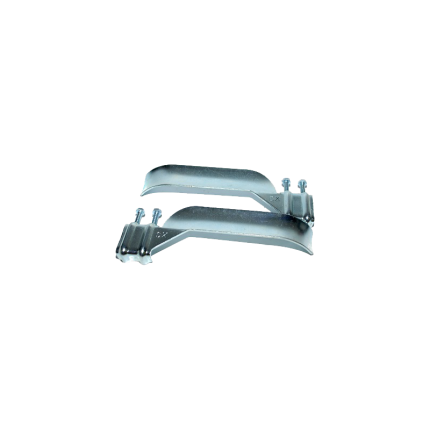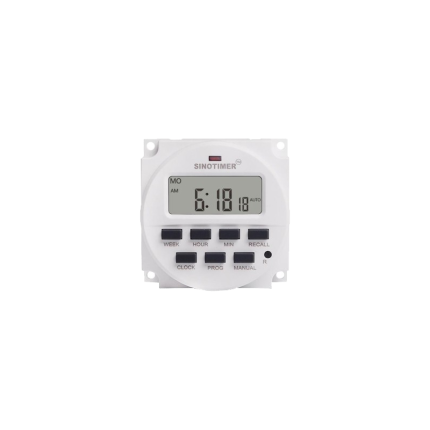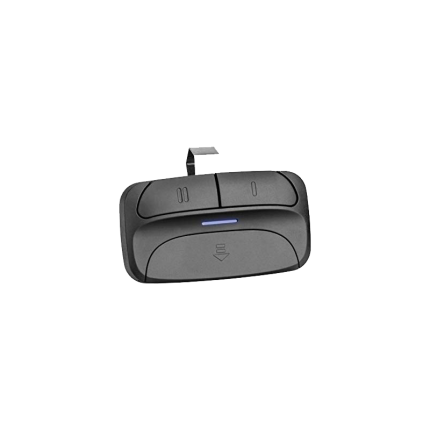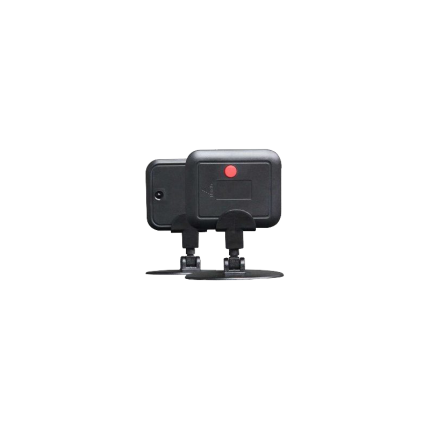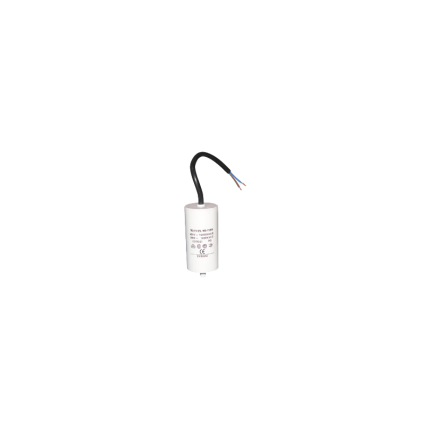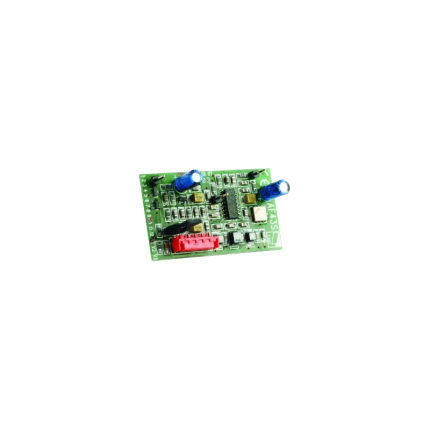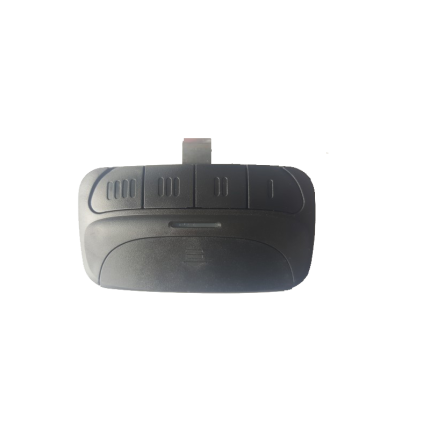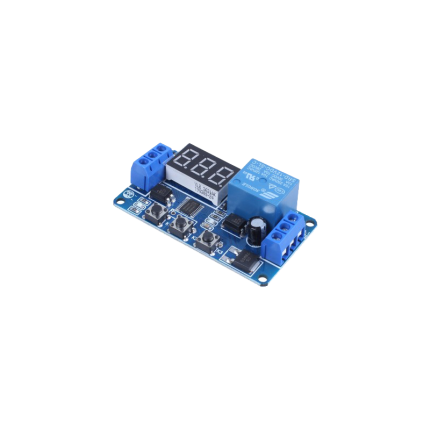Shop
Sliding gate operator limit stopper bracket
Ship or pick up from our office.
Sliding gate operator limit stopper bracket
The gate operator system with a damaged limit stopper bracket can not work properly, and it will soon stop working. Most of the time, the main control board and the motor will be damaged because of this issue and have to be replaced. Sometimes errors come from the limit stopper bracket not working because they are damaged and needs only to be cleaned or readjustment.A sliding gate operator limit stopper bracket is a component that works with limit switches to prevent a sliding gate from over-extending its travel, ensuring it stops at the desired open and closed positions.
These brackets typically hold magnets or other sensor components that interact with the limit switches on the gate operator's control board. They help maintain the gate's smooth and safe operation by preventing it from hitting obstructions or going off its track.
Here's a more detailed explanation:
-
Purpose:The primary function of the limit stopper bracket is to define the boundaries of the gate's movement. It ensures the gate stops at the fully open and fully closed positions, preventing it from over-traveling.
-
How it works:The bracket holds a magnetic or other type of sensor that is triggered when the gate reaches its limit. This trigger sends a signal to the gate operator's control board, which then stops the motor.
-
Components:
- Bracket: The physical structure that holds the sensor.
- Sensor: A device (often a magnet) that interacts with the limit switch.
- Limit Switch: A switch on the gate operator's control board that is activated by the sensor.
- Bracket: The physical structure that holds the sensor.
-
Importance:
- Safety: Prevents the gate from hitting objects or going off track, reducing the risk of damage or injury.
- Reliability: Ensures consistent and reliable gate operation by defining the travel limits.
- Protection: Protects the gate, operator, and surrounding objects from damage due to over-travel.
- Safety: Prevents the gate from hitting objects or going off track, reducing the risk of damage or injury.
USB Gate Opener Remote
Ship or pick up from our office.
USB Gate Opener Remote
A USB gate opener remote control is a device that allows you to open and close automatic gates or garage doors by plugging a USB dongle into your car's USB port and using it as a remote.
USB Gate Opener Remote emits a sensing signal upon receiving a command from the USB port, which then triggers the gate opener to open or close the driveway gate.
Here's a more detailed explanation:
How it works:
-
USB Gate Opener Remote Dongle:The device typically includes a small USB dongle that plugs into your car's USB port.
-
Sensing Signal:When the USB is plugged in and the car is in the "on" mode, the dongle emits a sensing signal.
-
Receiver:The signal is received by a unit connected to the driveway gate motor.
-
Gate Motor Activation:The receiver then activates the gate motor, causing the driveway gate to open or close.
Key features:
-
Dual Control Modes:Some models offer both automatic and manual modes, allowing you to operate the gate either by proximity sensing or by pressing a button on the USB dongle.
-
Compact and Portable:The USB dongle is small and lightweight, making it easy to use and store in your car.
-
Easy Installation:It's designed for simple plug-and-play functionality, requiring no complex setup.
-
Replacement Accessory:The USB gate opener remote serves as a convenient replacement for traditional gate remote controls.
Wireless Doorbell
Ship or pick up from our office.
Wireless Doorbell
A wireless doorbell is a modern type of doorbell that operates without the need for physical wiring between the outdoor button and the indoor chime unit. Unlike traditional wired doorbells that rely on an electrical circuit, wireless doorbells use radio waves (or sometimes Wi-Fi or Bluetooth) to transmit a signal when the button is pressed. Here's a breakdown of its key components and how it works:- Transmitter (Doorbell Button): This is the part located outside your door that a visitor presses. It typically contains a small battery (though some "kinetic energy" versions generate power from the press itself) and sends a wireless signal when activated.
- Receiver (Chime Unit): This is the indoor component that produces the sound (chime or melody) when it receives the signal from the transmitter. Receivers can be battery-operated for portability or plug into a standard electrical outlet.
- When a visitor presses the doorbell button (transmitter), it sends a unique radio frequency (RF) signal.
- The signal travels wirelessly through the air.
- The receiver inside your home detects this signal.
- Upon receiving the signal, the receiver activates its chime or melody, alerting you to the visitor.
- Easy Installation: No need for complex wiring, drilling holes, or hiring an electrician. This makes them ideal for renters or anyone looking for a quick and simple setup.
- Flexibility and Portability: Since there are no wires, you can place the chime unit virtually anywhere in your home, and even move it around if needed. Many systems also allow for multiple receivers throughout a large house or property.
- Customization: Most wireless doorbells offer a variety of chime melodies and adjustable volume levels, allowing you to personalize the sound.
- Advanced Features (Smart Doorbells): Many modern wireless doorbells, often called "smart doorbells," integrate with Wi-Fi and offer additional features like:
- Video cameras: Allowing you to see who's at your door from your smartphone, even when you're not home.
- Two-way audio: Enabling you to speak with visitors remotely.
- Motion detection: Alerting you to activity outside your door.
- Smartphone notifications: Sending alerts to your phone when someone rings the bell or motion is detected.
- Integration with smart home systems: Connecting with other devices like smart lights or security systems.
- Enhanced Security: With features like video recording and remote monitoring, wireless doorbells can deter potential intruders and provide valuable evidence in case of an incident.
Digital programmable ON/OFF relay
Ship or pick up from our office.
Digital programmable ON/OFF relay
A digital programmable ON/OFF relay is an electronic switch that can be programmed to turn electrical devices on or off at specific times or intervals. It combines the fundamental switching functionality of a traditional relay with the advanced timing and control capabilities of a digital timer or microcontroller. This allows for automated control of various devices and systems without constant human intervention. How it Works At its core, a digital programmable ON/OFF relay operates similarly to a standard relay by using a small electrical current to control a larger electrical circuit. However, the "digital programmable" aspect introduces a sophisticated timing mechanism.- Digital Interface: Unlike mechanical or analog timer relays with physical dials, digital programmable relays feature an LED or LCD display and a keypad or buttons for programming. This allows users to set precise ON/OFF times, durations, and sequences.
- Microcontroller-Based: Most digital programmable relays use a microcontroller to manage the timing and control logic. This internal "brain" keeps track of time and executes the programmed instructions.
- Timing Functions: These relays offer a wide range of timing functions, including:
- On-delay: The relay turns on after a preset delay once activated.
- Off-delay: The relay turns off after a preset delay once deactivated.
- Interval timing: The relay stays on for a specific duration after activation.
- Cyclic operation: The relay repeatedly cycles ON and OFF at set intervals.
- Astronomic timing: Some advanced models can turn devices on/off based on sunrise and sunset times by calculating the solar position.
- Photocell integration: Others may include light sensors to activate based on ambient light levels.
- Memory Retention: Many programmable relays can store settings in memory even after a power interruption, ensuring that the programmed schedule is not lost.
- Programmable Timing: Offers precise control over when devices turn on and off.
- Automation: Reduces the need for manual operation, leading to increased efficiency.
- Energy Savings: Allows for optimization of energy usage by ensuring devices are only active when needed.
- Flexibility and Versatility: Can be configured for a wide array of applications due to various timing modes.
- Compact Design: Often more compact than systems using multiple hardwired timers and relays.
- Ease of Use: User-friendly interfaces for setting up programs.
- Reliability: Many are solid-state, meaning they have no moving parts, which increases durability and reduces noise compared to electromechanical relays.
- Home Automation: Controlling lighting, appliances, or other devices based on a preset schedule (e.g., security lights, garden irrigation).
- Industrial Automation: Managing machinery, conveyors, pumps, motors, and other equipment in factories or manufacturing facilities.
- Building Management Systems: Automated control of HVAC systems (heating, ventilation, air conditioning), lighting (e.g., streetlights turning on at dusk), and security systems.
- Commercial Applications: Used in vending machines, amusement equipment, and commercial appliances.
- Agriculture: Controlling irrigation pumps or greenhouse lighting.
- Security Systems: Activating alarms or security lights at specific times or in response to sensors.
Garage Door Opener Remote Control
Ship or pick up from our office.
Garage Door Opener Remote Control
A garage door opener remote control is a small, handheld device that uses radio frequency (RF) signals to wirelessly communicate with your garage door opener system. Essentially, it's a transmitter that sends a unique code to a receiver built into your garage door motor unit, telling it to open or close the garage door. Here's a breakdown of how it works and its key features: Functionality:- Signal Transmission: When you press a button on the remote, it sends a radio frequency signal containing a specific code.
- Signal Reception: The garage door opener has a receiver that constantly "listens" for these signals.
- Code Matching: If the received code matches the opener's stored code, the receiver activates the motor.
- Motor Activation: The motor then powers a drive mechanism (chain, belt, screw, or direct drive) that moves the garage door up or down.
- Radio Frequency (RF) Communication: Most remotes operate using RF signals (commonly 315 MHz or 390 MHz), allowing them to work from a distance and even through walls.
- Fixed Code Technology (Older): Early remotes used a fixed code that was sent every time. This was less secure as the signal could be easily intercepted and duplicated.
- Rolling Code Technology (Modern): To improve security, modern remotes use rolling code technology. The code changes every time you press the button, making it extremely difficult for unauthorized individuals to "grab" and reuse the code. Brands like LiftMaster (Security+ / Security+ 2.0) and Genie (Intellicode®) use their own versions of this.
- Dip Switches (Older): Some older remotes used physical dip switches that needed to be manually set to match the receiver's code.
- Wi-Fi and Smart Home Integration: Many newer garage door openers feature built-in Wi-Fi, allowing you to control your garage door from anywhere using a smartphone app (e.g., MyQ for LiftMaster/Chamberlain, Aladdin Connect for Genie). These apps often offer additional features like real-time notifications, scheduling, and access history.
- Multi-Button Remotes: Some remotes have multiple buttons, allowing you to control several garage doors or even other devices like lights.
- Universal Remotes: These are programmable remotes designed to be compatible with various brands and models of garage door openers, reducing the need for multiple remotes.
- Standard Remotes: Basic remotes with one or more buttons to operate the garage door.
- Visor Remotes: Larger remotes designed to clip onto your car's sun visor for easy access while driving.
- Keychain Remotes: Small, compact remotes that can be attached to your keyring for portability.
- Keypad Remotes: Mounted outside your garage door, these allow you to enter a numerical code to open the door, useful for keyless entry.
Infrared Card
Ship or pick up from our office.
Infrared Card
An Infrared Card, also known as an infrared detection card or laser viewing card, is a tool used to visualize infrared light, typically from lasers or other sources, by converting it into a visible light display. It's a simple, low-cost way to check for the presence and position of infrared beams, making it useful for alignment, safety, and diagnostic purposes.
Here's a more detailed explanation:
What it does:
-
Converts invisible IR light to visible light:The card contains a material, often phosphorescent, that absorbs infrared radiation and then emits visible light when stimulated.
-
Indicates presence and location:The illuminated spot on the card shows where the infrared beam is hitting, making it easy to see the beam's path and focal point.
-
Used for various applications:Infrared cards are used for aligning lasers, checking for infrared light leakage, visualizing infrared beams from various sources, and ensuring safety by detecting potentially harmful IR radiation.
Gate operator capacitor
Ship or pick up from our office.
Gate operator capacitor
A gate operator capacitor is an electrical component that assists the motor in a gate opener system to start and run smoothly.
It stores and releases electrical energy to provide the initial torque needed to get the motor going and to ensure consistent operation. These capacitors are crucial for both swing and sliding gate openers that are powered by AC.
Here's a more detailed explanation:
-
Starting the Motor:When a gate opener is activated, the motor needs a significant amount of power to begin rotating. The capacitor provides a burst of electrical energy to help the motor overcome its inertia and start moving.
-
Maintaining Smooth Operation:Once the motor is running, the capacitor helps to smooth out the electrical current, ensuring consistent and efficient operation. This prevents the motor from stalling or experiencing performance issues due to voltage fluctuations.
-
Types of Capacitors:Gate operator capacitors can be categorized as either start capacitors or run capacitors.
- Start capacitors: are used to provide the initial surge of power needed to get the motor rotating.
- Run capacitors: help to maintain consistent motor performance during operation.
- Start capacitors: are used to provide the initial surge of power needed to get the motor rotating.
-
Common Applications:Capacitors are used in various gate operator systems, including:
- Swing gate openers
- Sliding gate openers
- Commercial and residential gate systems
- Barrier arms
- Overhead doors
- Swing gate openers
-
Compatibility:Different gate operators may require specific types and sizes of capacitors, so it's important to choose the right replacement capacitor for your system.
Delay relay 0.5 Sec – AC 24 V to AC 24 V
Ship or pick up from our office.
Delay relay 0.5 Sec - AC 24 V to AC 24 V
delay relay 0.5 Sec - AC 24 V to AC 24 V is a type of electrical relay that introduces a 0.5-second time delay in a circuit, specifically designed to operate with a 24-volt AC (Alternating Current) power supply. This means that when the control voltage (24V AC) is applied or removed, the relay's output contacts won't change their state immediately; instead, there will be a half-second pause before they do. Here's a breakdown of what each part of the description means:- Delay Relay (or Time Delay Relay/Timer Relay): This is a control device that, unlike a standard relay, incorporates a timing function. It's used to control an event based on a pre-selected time interval.
- 0.5 Sec: This specifies the duration of the time delay. In this case, it's a very short half-second delay. Time delays can range from milliseconds to hours or even days, depending on the relay.
- AC 24 V (Input/Control Voltage): This indicates the type and voltage of the power supply required to energize the relay's coil or internal control circuitry. "AC" means Alternating Current, and "24 V" is the nominal voltage.
- to AC 24 V (Output/Load Voltage): While not explicitly stated as "output," this implies that the relay is likely intended to switch a 24V AC load. This means the contacts within the relay are rated to handle 24V AC to control another part of the circuit or a device. It's important to note that the load voltage can sometimes be different from the control voltage, but in this specific phrasing, it suggests both are 24V AC.
- On-Delay (Normally-Open, Timed-Closed - NOTC): The most common type. When the control voltage is applied, the timing period begins. After 0.5 seconds, the output contacts close. The contacts remain closed as long as the control voltage is present.
- Off-Delay (Normally-Open, Timed-Open - NOTO): When the control voltage is applied, the output contacts close immediately. When the control voltage is removed, the 0.5-second delay begins. After this delay, the contacts open.
- One-Shot: Provides a single output pulse of a specified duration (in this case, 0.5 seconds) when triggered.
- Repeat Cycle: Alternates between ON and OFF states for defined durations, creating a repeating cycle. This particular relay with a fixed 0.5-second delay is less likely to be a multi-function repeat cycle unless it's just one setting within a programmable unit.
- Sequencing Operations: Ensuring one component starts or stops slightly after another in a controlled sequence.
- Motor Control: Providing a brief delay before starting a motor (e.g., for pre-lubrication pumps to stabilize).
- Safety Interlocks: Implementing a short delay to ensure certain conditions are met before an action can occur.
- HVAC Systems: Timing the activation or deactivation of fans, compressors, or other components.
- Conveyor Systems: Coordinating the starting or stopping of multiple conveyor belts to prevent material jams.
- Lighting Control: For example, a short delay before turning on a light in a specific area
Gate Opener Remote Control 1400FT315
Ship or pick up from our office.
Gate Opener Remote Control 1400FT315
*High-Range 1400ft *315 MHz *Compatible with HomeLink system on vehicles *1 channelGate Opener Remote Control
Ship or pick up from our office.
Gate Opener Remote Control
*With Visor Clip *433 MHz *4 ButtonsProgrammable timer relay
Ship or pick up from our office.
Programmable timer relay
A programmable timer relay is an electronic device that combines the functions of a timer and a relay, allowing users to set specific time delays for switching electrical circuits on or off. Essentially, it acts as an automated switch that operates based on pre-programmed time intervals. This enables the automation of various processes and equipment across a wide range of applications. How it Works Programmable timer relays incorporate internal circuitry (often microcontrollers or digital logic chips) that allow for precise timekeeping and control. Here's a general overview of how they function:- Control Signal: The programmable timer relay receives an input or "trigger" signal, which initiates the timing process. This signal can come from a switch, sensor, or another control device.
- Timing Mechanism: Once the signal is received, the internal timing mechanism begins to count down or up based on the programmed parameters.
- Delay Period: During this delay, the relay's contacts remain in their initial state (either normally open or normally closed).
- Contact Switching: Once the programmed delay period elapses, the relay's contacts change state, either closing to allow current to flow or opening to interrupt it.
- Maintaining State & Resetting: The relay maintains its new state until the input signal is removed, or a reset function is triggered. Programmable relays offer various timing modes, such as:
- On-delay: The relay activates after a set delay once the input signal is applied.
- Off-delay: The relay deactivates after a set delay once the input signal is removed.
- Interval: The relay activates for a set period and then deactivates.
- Cyclic: The relay repeatedly alternates between on and off states for specified durations.
- Industrial Automation: They control the sequencing of machinery, conveyor belts, pumps, and other equipment in manufacturing processes, ensuring precise timing and preventing system overloads.
- Lighting Control: Used in homes, commercial buildings, and street lighting to turn lights on and off at specific times or based on ambient light levels, optimizing energy consumption and security.
- HVAC Systems: Regulate fan operations, compressor cycles, and defrost cycles in heating, ventilation, and air conditioning systems to maintain desired temperatures and reduce energy use.
- Security Systems: Implement delays for door locks, alarm systems, and surveillance cameras, allowing for controlled access and scheduled activation/deactivation.
- Pump Control: Manage water pumps, sewage pumps, and sump pumps, ensuring they operate only when needed, which conserves water and prevents pump damage.
- Home Automation: Automate various household appliances like irrigation systems, washing machines, and dishwashers.
- Vehicle Systems: Control functions like intermittent windshield wipers and turn signals.
- Versatility and Customization: They can be programmed for various timing functions and sequences within a single unit, offering great flexibility for diverse applications.
- Energy Savings: By automating on/off cycles and ensuring equipment runs only when necessary, they help reduce energy consumption and costs.
- Increased Efficiency: They enable automated control of equipment and processes, improving overall operational efficiency and reducing the need for manual intervention.
- Reduced Components and Wiring: By integrating multiple timing and switching functions into one device, they can replace several individual timers and relays, simplifying wiring, reducing component inventory, and saving space in control panels.
- Cost-Effectiveness: For simpler automation tasks, they offer a more economical solution compared to full-fledged PLCs.
- Ease of Use: Many programmable timer relays feature user-friendly digital interfaces or software, making them relatively easy to configure without requiring extensive programming knowledge.
- Precise Time Control: They offer high temporal precision, with delays ranging from milliseconds to several hours.
- Troubleshooting: Integrated displays often provide alarm messages and I/O status, simplifying troubleshooting.
Gate Rubber Stopper A1
Ship or pick up from our office.
Gate Rubber Stopper A1
Types of Rubber Stoppers:
- Fixed rubber stoppers: Permanently installed, often used for heavier gates.
- Adjustable rubber stoppers: Allow for customization of the gate's swing position.
- Spring-loaded rubber stoppers: Combine a spring mechanism with the rubber for enhanced shock absorption and noise reduction.
- Floor-mounted rubber stoppers: Attached to the floor to stop the gate's movement.
Where they are used:
-
Swing gates:Commonly used to prevent swing gates from hitting walls, posts, or other structures.
-
Sliding gates:Used to stop the gate at the end of its track, preventing it from rolling off.
-
Industrial gates:Used in various industrial settings for gates that experience frequent and forceful use.
-
Residential gates:Used in homes to protect gates, walls, and prevent accidents.

